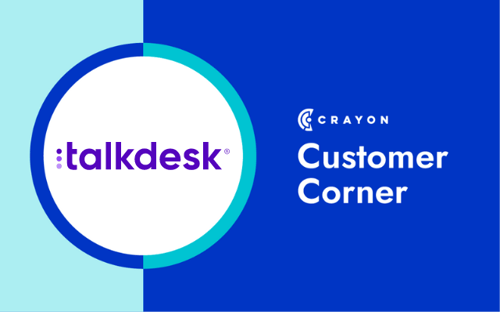One sales enablement tool we all know and love is the competitive battlecard. Battlecards are an extremely impactful tool for your sales team to have in their toolbox, especially when a prospect is deciding between you and a competitor. When done right, battlecards have the ability to provide your sales team with the knowledge they need to crush the competition.
All too often, companies make the mistake of filling these battlecards with points that have been collected by word of mouth. When a seemingly important piece of intel comes in through word-of-mouth, it might seem critical to share that with your team. But, by collecting field intelligence and adding those insights into your battlecards without fact-checking, you’re at risk of providing your sales team with inaccurate information. This is what we mean with the term battlecard bias - creating battlecards based on information that you believe to be true, based on hearsay information, to help position your company as the best choice for your market.
So, how can you ensure that it’s an accurate insight, and how can other prospects be sure that you’re giving them unbiased information? Let’s take a look at how to eliminate bias and arm your sales team with the best battlecards.
What is a Battlecard? Back to the Basics
When your sales rep is trying to close a deal when a prospect is torn between you and a competitor, they’re fighting a battle, which is why we call these handy cheat sheets competitive battlecards. Commonly, battlecards have a combination of tactical and strategic insights for your sales team to leverage in competitive deals and utilize when faced with competitive objections. Some examples of battlecard tiles include company profile, quick dismiss, win / loss stories, landmines, pricing, and more. Having uniform collections of data on each competitor allows all of your sales team members to be on the same page, and have prepared answers, rather than just guessing, when a prospect asks for differentiating traits between you and a competitor.
Load your Battlecards with Trustworthy Information
There is a certain level of trust that needs to be built during the sales process between the sales representative and the prospect. Your sales team should be able to build the necessary trust with a prospect by showing that they understand not only their needs but also how your product can benefit their current process.
Without battlecards, if a prospect asks about a competitor while on a sales call, it can be a tricky situation for your sales rep. It’s easy to deflect questions from prospects or provide them with biased information, but they are more likely to trust you if they’re being provided with facts. Being able to provide prospects accurate information about a competitor allows your team to maintain your credibility and continue to build trust.
That’s why relying on hearsay to create battlecards, without verifying the claims, can hurt your chances of winning a deal. Historically, battlecards were created with information passed on by word of mouth, that sometimes, proved to be untrue. However, your sales reps can still give you great intel, and it’s necessary to enable them to give field intel easily such as through a Slack channel or email. But even still, be sure to double-check the intel so that your battlecards have honest and accurate information.
So, how do you validate the claims that are being said about competitors? Do you wait until multiple sales people tell you the same claim? Do you simply trust that the information they receive from a prospect is right? Ultimately, you need to leverage data and conduct research to validate these claims.
Use Data to Validate Claims
Depending on the information that the prospect shared with your sales rep, there are multiple sources you could use for validating the claim. You can easily analyze your competitor’s digital footprint and view your competitor’s press releases, product release notes, or customer reviews online. That way, you can see firsthand what your competitors are doing and what your competitors’ customers are really saying about the product. All of these sources are good validators of information that can help you identify key insights to add to your battlecards.
For example, your sales rep is on a call with a prospect, and they mention that one of your competitor’s products isn’t very user friendly. Since you may not have firsthand knowledge of this, the best way to investigate and get validation would be to check reviews from their customers as well as product updates to see if your competitor is trying to improve their UX. You can arm your team by letting them know the cons of your competitor’s UX in comparison to the pros of your product or encourage them to point prospects to the negative reviews citing the competition’s poor UX. When adding this insight to a battlecard, craft messaging around this in a way that doesn’t attack your competitor’s UX, but rather highlights the positive elements of your own UX. That way, your team is prepared to tackle that topic in the future, and steer the conversation in the right direction.
Fuel Your Battlecards with Real-Time Intelligence
The best way to ensure that you’re providing your sales team with researched, data-backed insights, is to create your battlecards with the help of real-time intelligence. Additionally, to make sure your sales team has easy access to their battlecards—host them where your sales team spends the most time, such as right in your CRM or sales enablement platform.
Information changes rapidly, which means gathering competitive intelligence never stops. The information that you’re gathering is beneficial for all teams within your organization. Battlecards may only be one part of your sales enablement tool belt, but should be updated whenever you have new factual data about a competitor. Ensure that you’re staying on top of the changing landscape and keep your battlecards robust with the help of a real-time competitive intelligence tool that can gather great competitive intel and provide your teams with relevant alerts. The best way to ensure that you’re providing your sales team with researched, data-backed insights, create your battlecards with the help of real-time intelligence. Additionally, to make sure your sales team has easy access to their battlecards, host them where your sales team spends the most time such as right in your CRM or CMS.
Eliminating battlecard bias is as easy as fact-checking your competitive insights from field intelligence. Before putting information into a battlecard, fact-check your findings, and make sure you have the latest insights for your team. By creating up-to-date battlecards for your team, with unbiased information, your sales reps will foster trustworthy relationships with prospects, and win more competitive deals.
Originally published April 19, 2018. Updated on October 29, 2020.

Related Blog Posts
Popular Posts
-
 The 8 Free Market Research Tools and Resources You Need to Know
The 8 Free Market Research Tools and Resources You Need to Know
-
 How to Measure Product Launch Success: 12 KPIs You Should Be Tracking
How to Measure Product Launch Success: 12 KPIs You Should Be Tracking
-
 24 Questions to Consider for Your Next SWOT Analysis
24 Questions to Consider for Your Next SWOT Analysis
-
 How to Create a Competitive Matrix (Step-by-Step Guide With Examples + Free Templates)
How to Create a Competitive Matrix (Step-by-Step Guide With Examples + Free Templates)
-
 6 Competitive Advantage Examples From the Real World
6 Competitive Advantage Examples From the Real World





